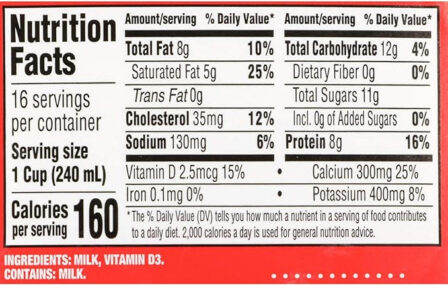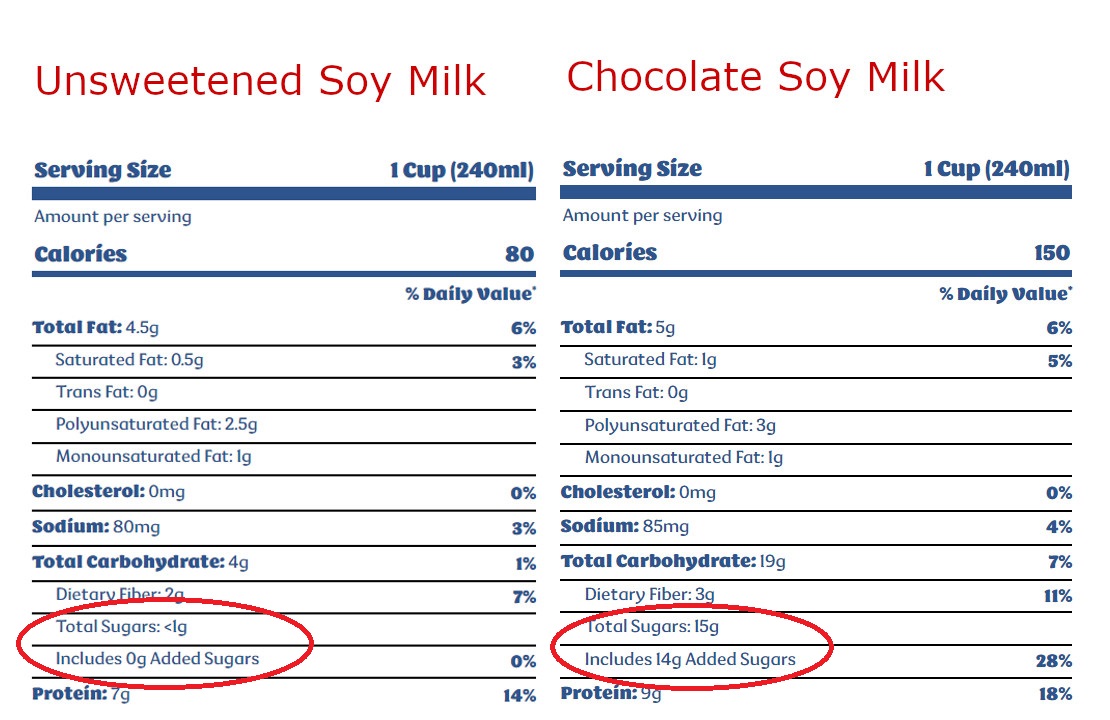Calcium, iodine, and protein, oh my! Cow’s milk can provide a variety of nutrients that children need to grow. But what should parents think about if milk is not an option, either for medical reasons, such as food allergy, lactose intolerance, eosinophilic esophagitis, etc., or cultural or personal preferences?
Milk’s Role to Support Growth
For some children, milk can be a key contributor to a well-balanced diet. The United States Department of Agriculture (USDA) recommends 2-3 servings of milk a day for toddlers, as it’s an efficient way to get calories, protein, vitamins and minerals.
Whole milk is a good source of fat and protein for 12-23 month-olds. It provides calcium, iodine, potassium, and vitamin A and D. At age two, the USDA recommends switching to low-fat milk to limit calories from saturated fat to less than 10% of calories per day.
The good news is that there are a lot of good alternative milks available in the supermarket. But with so many choices, it’s important to know what to pay attention to from a nutrition standpoint. As a dietitian who works with kids with food allergies, discussing what to look for in milk alternatives is something I routinely spend time discussing with families.
There are a few considerations when thinking about alternative milks:
HOW TO CHOOSE AN ALTERNATIVE MILK FOR KIDS
1. Consider the Purpose of Alternative Milk

When thinking about an alternative milk, consider what role it’s playing in your child’s overall nutrition. If your child is a toddler with a milk allergy, you may need to prioritize finding an alternative higher in calories and protein similar to the nutrient makeup of cow’s milk (see nutrition label). If they’re lactose intolerant, there are lactose-free milks and dairy products, like cheese and yogurt, that have a similar nutrient makeup and would be suitable substitutes. If they’re teenagers who are growing well and seemingly getting adequate nutrition from other food sources, the nutrient makeup of the alternative milk will likely be less important.
The volume is something to keep in mind as well. For example, if you’re using alternative milk for baking or cooking, the nutritional content isn’t as crucial.
That said, it’s also key to pay attention to how much sugar is in some alternative milks — it can add up quickly! While cow’s milk has naturally occurring sugars, a number of alternative milks have a lot of added sugar, which we recommend limiting. For instance, the same brand of soy milk can have less than one gram of sugar for unsweetened, six grams for original, and 15 grams for chocolate flavored (see below). The U.S. Dietary Guidelines and the American Heart Association recommend that kids should have no more than 24 grams of sugar per day.

2. Look for Nutrient-Dense Milk Alternatives
When choosing an alternative milk – especially if you’re attempting to replace the daily serving requirements for younger kids and toddlers – look for ones that are higher in protein (6-8 grams per serving), fat and vitamin and minerals. From this standpoint, fortified soy and pea milk are usually good substitutes, as they both have similar amounts of protein and calcium to cow’s milk. Examples of alternative milks that aren’t as nutrient dense are: almond, oat, coconut, cashew and rice.
3. Think About Calcium Levels
Kids need varying levels of calcium each day: children ages 1-3 need 700 mg; 4-8 need 1,000 mg; and 9-18 need 1,3000. Also, children 12 months and older need 600 International Units (IU) of vitamin D daily. For perspective, 1 cup of cow’s milk provides 300 mg of calcium and 120 IU of vitamin D.
Drinking a milk alternative or taking calcium and vitamin D supplements are both easy ways to ensure your kids are not missing out on these important nutrients that support bone health. But we also don’t want to give them too much.
Intuitively, we might think that kids who don’t drink cow’s milk need a calcium supplement; however, if their milk alternative provides adequate calcium, then adding a calcium supplement could give them too much. For all children, we recommend limiting milk or alternative milk to 24 ounces per day.
4. Ask a Registered Dietitian
If you’re unsure of what milk alternative may be best for your child, registered dietitians are a great resource! They will take into account your child’s current food intake and nutritional needs and provide recommendations to help achieve their nutrition goals.
To learn more about plant-based milk alternatives and kids, listen to this previous podcast episode. For more information about Nutrition Therapy at Cincinnati Children’s, or to schedule an appointment, please call 513-636-7475 opt 1.
Editor’s note: Alison Cassin, RD, also contributed to this blog post.






While toddlers don’t have to drink milk, the best milks for toddlers provide many essential nutrients, including vitamin D and calcium, in one kid-friendly beverage.